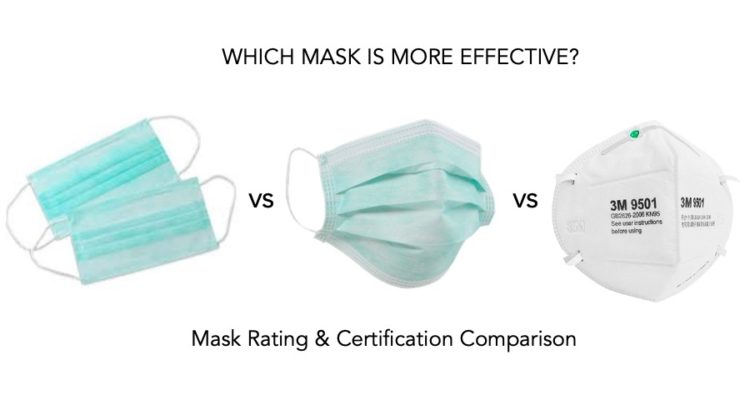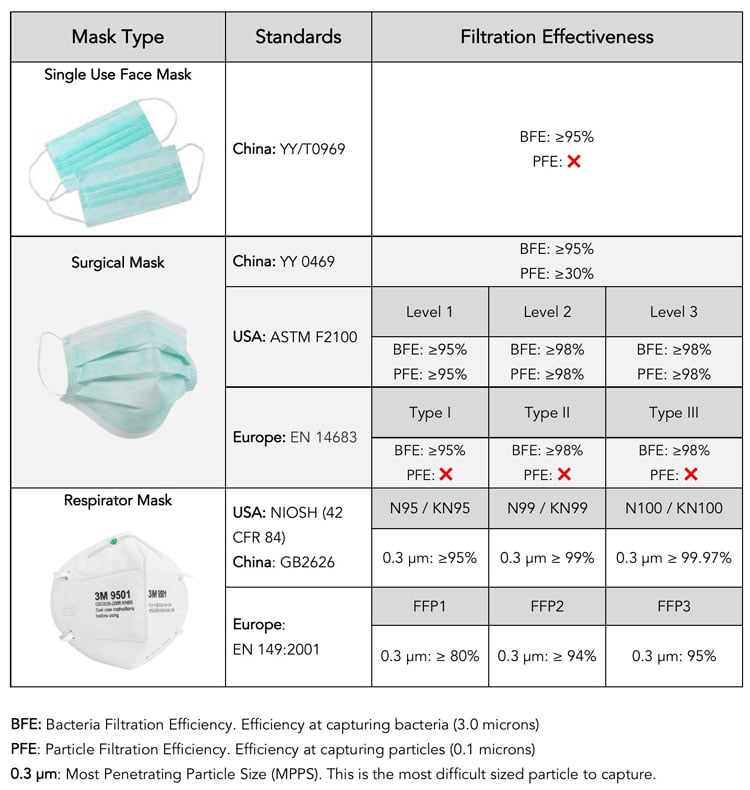
N95, FFP1, surgical mask or respirator? These are questions we’ve been getting ever since the coronavirus outbreak in China spread into a global pandemic. Here will give you a quick run-down on mask type, mask standards, and their effectiveness at filtering particles.
First off, let’s start with mask types (or certification types). In general, there are 3 (or sometimes 4) types of commonly used, disposable masks. They are single-use face masks, surgical masks, respirators, and then sometimes ‘medical respirators’. Here they are:
surgical mask respirator mask standards and filtration effectiveness

To summarise mask ratings and their effectiveness:
Single use masks (normally one layer, very thin) are typically only effective at capturing larger dust-sized particles but can do so fairly well.
Surgical mask standards have higher requirements for capturing virus sized (0.1 microns) particles, however, they vary by region
Respirators typically capture >90% of virus-sized particles. You can use the rating system in the table above to see the exact proportion of each certification required.
Each country has its own certification standard for each mask type. For example, in Europe, they have the EN 14683 standard for surgical masks, whereas China uses the YY 0469 standard. Each standard varies a little by country, however, they are broadly similar.
The standard with the lowest requirements on filtration effectiveness is the single use face masks. The surgical masks and then respirators follow, in that order, in terms of filtration effectiveness. Respirators also have higher requirements on fit than surgical masks and single-use face masks.